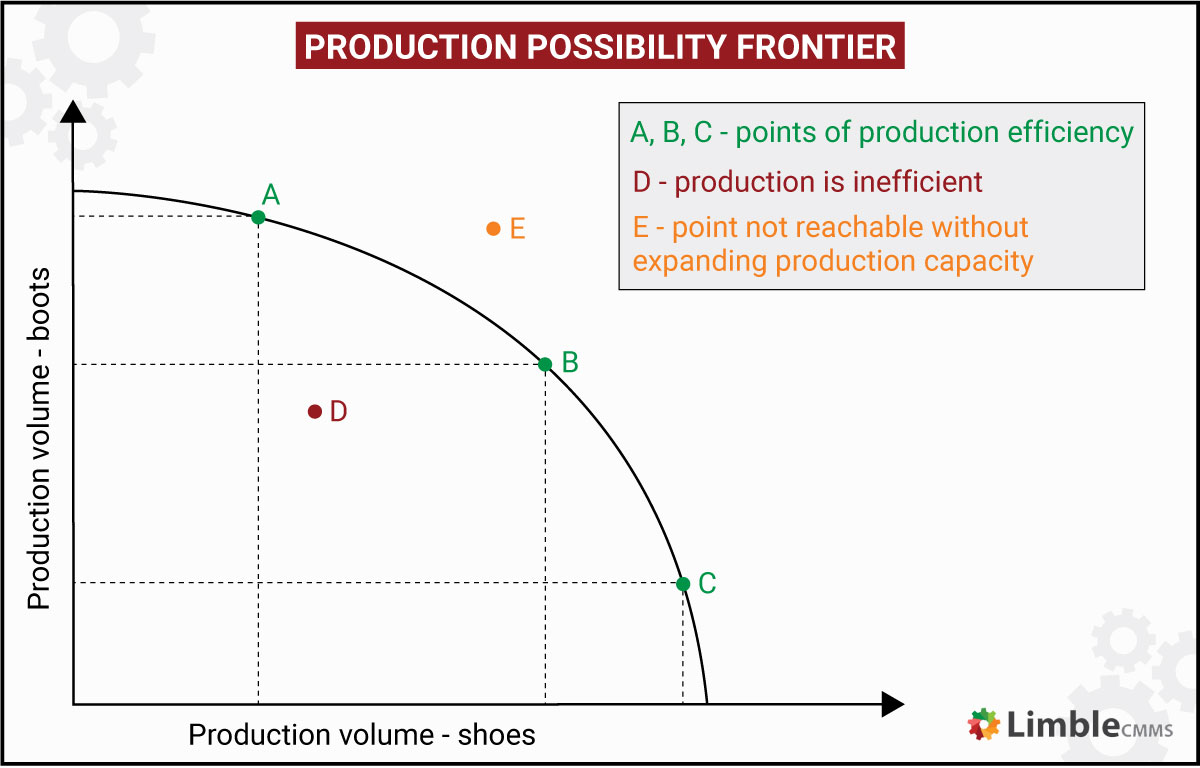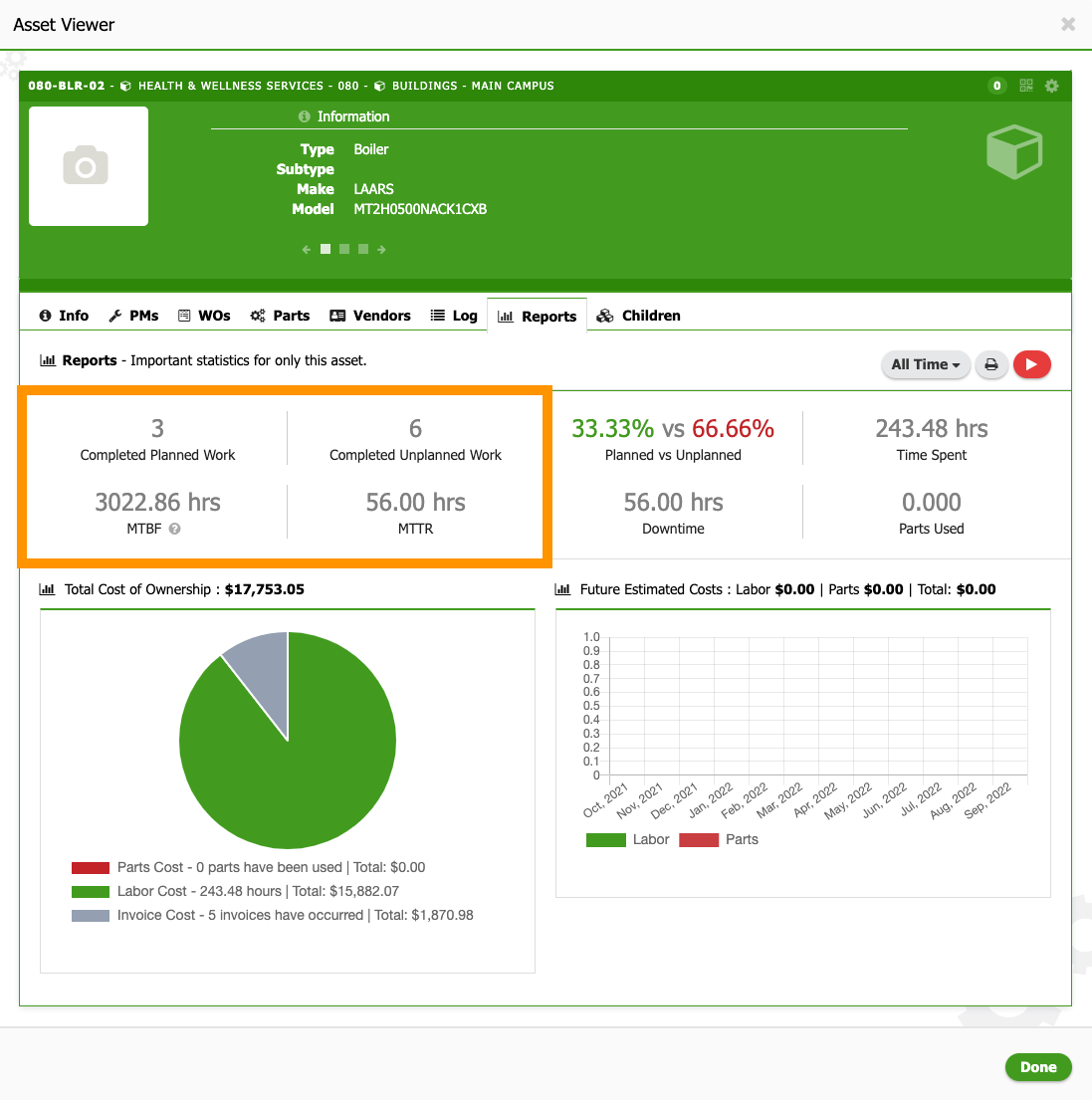Productive Efficiency
Everything you ever needed to know about productive efficiency
What is productive efficiency?
The world of economics may not be something you concern yourself with every day, but it has a lot to say about efficiency. And productive efficiency is what connects the macroeconomics (the big picture like overall cost savings and market needs) to the microeconomics (the little things like saving a few minutes during every changeover) of manufacturing.
Productive efficiency is when you are using your limited resources to their fullest potential. Waste is at its lowest point possible. Production cannot increase without adding more of those resources.
Just like other economic efficiency measures, resources are central to the idea of PE. They are limited. In this world (or in your company), there is only so much:
- Material
- Energy
- Labor
- Equipment
- Capital
- Technology
Those limited resources force us to make decisions about the quantities and types of products we make. The goal is to use our inputs efficiently to create products that best meet the needs of the people who eventually end up using them. PE can be applied to any industry that has finite resources.
Productive efficiency in real life
If you think about it, PE can apply to non-industries as well. You may not realize it — and the idea of measuring it may be ridiculous — but every day, you make similar decisions.
How much time you spend at the gym, the office, or on hobbies — even what you have for dinner — depends on a complex constellation of factors.
- How much time do you have?
- What other obligations are on your schedule?
- Did you get a decent night’s sleep and have the energy for a workout?
- How important is it to you that you get to the gym today?
You probably do not use a personal productivity formula to figure out what to have for dinner. But for a production line that uses a large number of inputs and has big impacts on the supply chain, you definitely want to!
Why calculate productive efficiency?
The measurement of productive efficiency gives you an idea of how efficient you are with your resources. It gives you an easy-to-understand number or score that you can track over time. And it is the gateway to making significant improvements in your process.
If you are looking for more balance in your production process, PE is a great place to start. It makes the most of your inputs, produces the highest amount and quality of outputs, and minimizes average total costs. If that doesn’t tick the boxes on your buzzword bingo card, we don’t know what will!
The only way to reach PE is to get rid of waste and use all resources to their fullest.
How to calculate productive efficiency
First things first. Before we can calculate anything, we need numbers. Numbers that actually measure things.
Below are the metrics you will need to calculate your productive efficiency.
Actual output rate
The actual output rate is the number of products you can produce in a certain period. Naturally, to get your actual output rate, you will need to have the number of products and the amount of time it takes you to produce them.
For example, if you produced 100 pairs of shoes yesterday during your 18-hour shift, your actual output rate is 5.56 units per hour. Mathematically, it looks like this:
100 pairs of shoes (units) / 18 hours = 5.56 units per hour
For machines, the easiest way to measure it is by looking at historical production data. For machine operators and other workers, the organization might need to run time studies to acquire the baseline data.
Standard output rate
The standard output rate is very similar, but the “standard” you set for productivity is your goal or ideal. How long should it take you to make the same amount of products if your process was running at peak efficiency? If our process was designed to make 100 pairs of shoes in 16 hours, it brings our standard output rate to the following:
100 pairs of shoes (units) / 16 hours = 6.25 units per hour
Productive efficiency calculation

Your productive efficiency score will be simple if you can calculate your actual output rate and your standard output rate. It is the ratio of your actual output rate to your standard output rate and looks like this:
Actual Output Rate / Standard Output Rate = Productive Efficiency
5.56 actual output rate / 6.25 standard output rate = 88.96% productive efficiency
If you are looking at a single production process for one type of item, this single score can tell you a lot. You are doing well, but there is still plenty of room to improve.
Now, let’s add a twist. What if you needed to make more than one kind of product? How do you choose to divide your resources and remain as resource-efficient as possible?
PE on the curve: the production possibility frontier
Now that you know how to calculate your point-in-time PE, let’s zoom out (way out) and look at it in the bigger picture when we need to make more than one product: the production possibility frontier.
The production possibility frontier (PPF) has lots of different names:
- Production possibility curve (PPC)
- Production possibility boundary (PPB)
- Transformation curve/boundary/frontier
You do not need to remember any of that word salad, but it is good to be aware of these terms. When you come across them, remember that they are all talking about the PPF.

Productive efficiency is easier to picture when represented graphically on a production Production Possibility Frontier (PPF). The curve shows various combinations of the amounts of two goods that can be produced with the given resources and technology.
The company with the PPF shown above can be maximally efficient with many different scenarios.
- Point A on the graph shows that more boots are produced than shoes, but there is no waste.
- Point B shows the company making about the similar amount of boots as shoes — but just a moderate amount of both. Point B is still on the curve so no resources are wasted.
- Point C on the graph shows more shoes produced than boots, but there is still no waste.
- Point D is showing that, with the available resources, you should be able to produce more shoes or boots. There is waste somewhere in the process — some resources are either idle or misallocated or both.
- Point E is unattainable with the available resources. The company would first need to make investments to increase production capacity.
As you can see, there is a real “robbing Peter to pay Paul” concept underlying the PPF.
Both product lines share the same inputs (rubber, fabric, stitching), labor, and equipment (sewing machines, cutting machines, outsole pressers, etc.). The more fabric you spend on product A, the less fabric is left to produce product B. Since you have a limited amount of resources that are shared between the two, the allocation of resources must be thoughtful.
There is a lot of fancy math that goes into creating that PPF curve. You do not need to know (and probably do not want to know) the details of that. Still, you might be wondering how to choose the amount of each product to make? Should you arrange your production processes to produce more shoes or boots? The answer to that lies in allocative efficiency.
Productive Efficiency vs. Allocative Efficiency
While PE refers to the efficiency of your process, allocative efficiency refers to how you allocate your resources efficiently across multiple products. The guiding light that helps you determine how to make those allocations is customer demand.
If you make an athletic shoe sponsored by a famous basketball player, it will likely be in very high demand (and fetch a pretty good price). If your other product is a sensibly priced pair of loafers, you have a decision to make. While there is nothing wrong with loafers (they are a classic, after all), your resources are much better used in the product that more people will buy at a higher price.
That is true even if it costs more to produce that athletic shoe. When you allocate your resources correctly, the marginal cost of making more of the product will be worth the marginal benefit to the people buying it. In other words, allocate your resources so that you can make products in volumes that match market demand.
Productive Efficiency FAQs
1. How do you achieve optimal efficiency?
There are a lot of ways to become more efficient. They typically involve tracking and measurement of your process and keeping improvement front of mind. Here are a few approaches to start you on that path:
- Overall Equipment Effectiveness (OEE) is similar to productive efficiency, but it is a more detailed score. The measurements that go into that score help you find your specific areas of waste so that you know where to start improving. Read more about OEE here.
- Lean mfg uses things as broad as your culture, approach to problem-solving, and process design to squeeze out every ounce of productivity. Read more about Lean here.
- Standardization and training is also an approach important enough to repeat. If you know you have production lines that operate a little differently than others, this one is for you. Start here, and you will be surprised how much efficiency you gain. Using a modern CMMS like Limble can make this easy with automated maintenance scheduling, customizable work order templates, work request forms, and more.
2. What is inefficient production?
When you aren’t making full use of your scarce resources, you are running inefficient production that negatively impacts your bottom line. Resources like labor, materials, energy, and equipment are expensive. Make sure you’re getting your money’s worth.
3. How do companies measure efficiency?
PE is not the only measurement of efficiency. There are many other productivity indexes depending on how sophisticated you want to get: data envelopment analysis, technical efficiency, Farrell measures, and others that economists love to apply to manufacturing.
But they all start with the same step: having a solid data and tracking process in place. If you don’t have production technology or systems that can track key measures of your production process, you will never be able to calculate efficiency.
CMMS systems like Limble are a great way to start and automate much of the data gathering process for you. For instance, Limble tracks the amount of time between a breakdown report to resolution (and a whole lot more).

Example of different reports inside Limble CMMS
This kind of data can open worlds of opportunity as you begin measuring and improving your process.
Want to see Limble in action? Get started for free today!
Maximum efficiency: working smarter, not harder
PE helps you begin to evaluate how well your production process uses the resources it has. It is the gateway to bigger and better efficiency practices.
If you start measuring efficiency now, it will help you:
- Minimize waste in the short run, paying dividends in the long run.
- Make more informed decisions about how much of which product to make when.
- Pinpoint your place on the PPF, scaling certain products up or down while remaining efficient.
- Introduces allocation efficiency into your process, considering the market in your production.
Productive efficiency is a great launching pad for more sophisticated types of efficiency calculations and continuous improvement activities. Limble has tools that can help. You can start a free 30-day trial here or request a demo.
Now, if only we had such a tool for how to spend our own personal energy!


